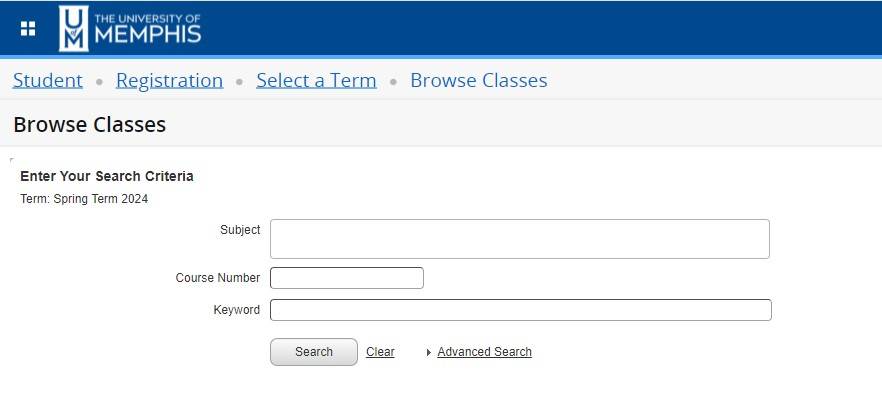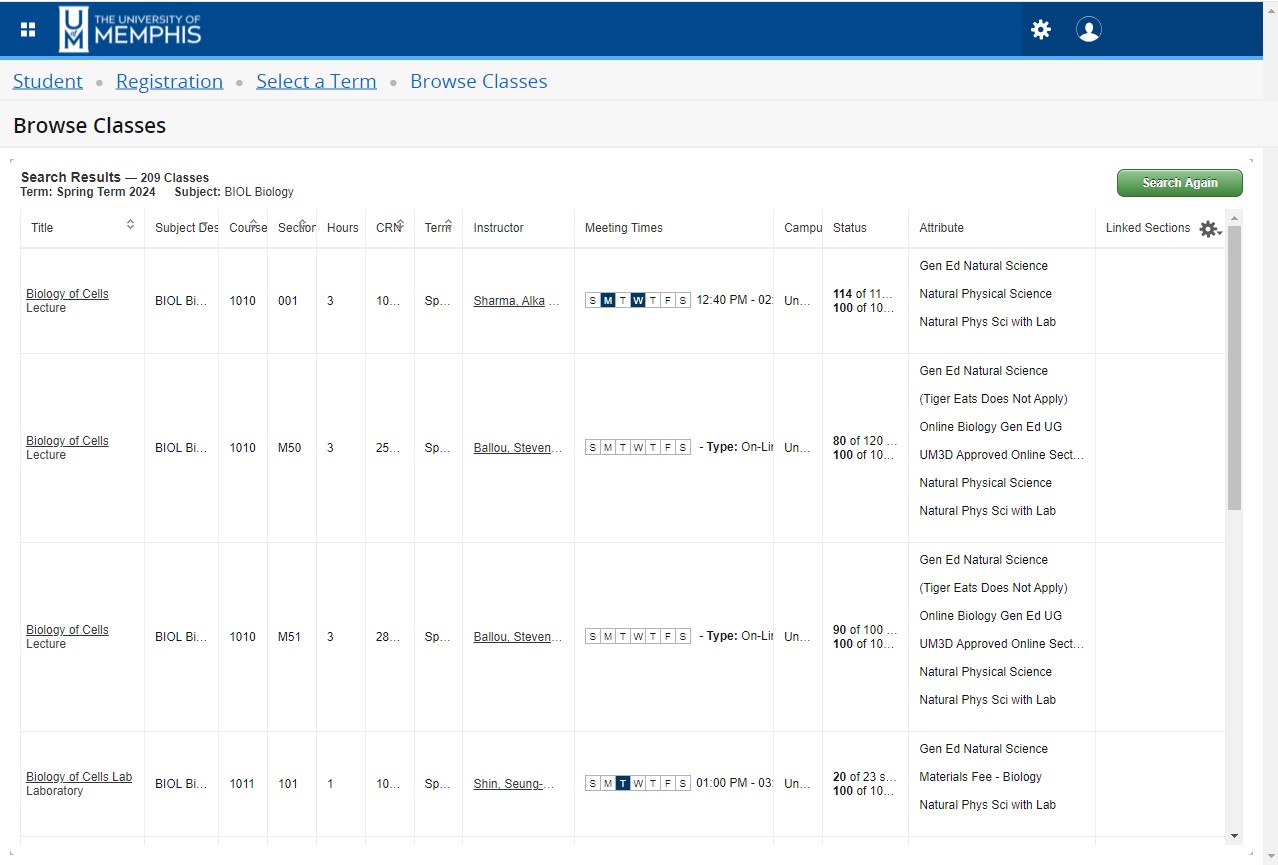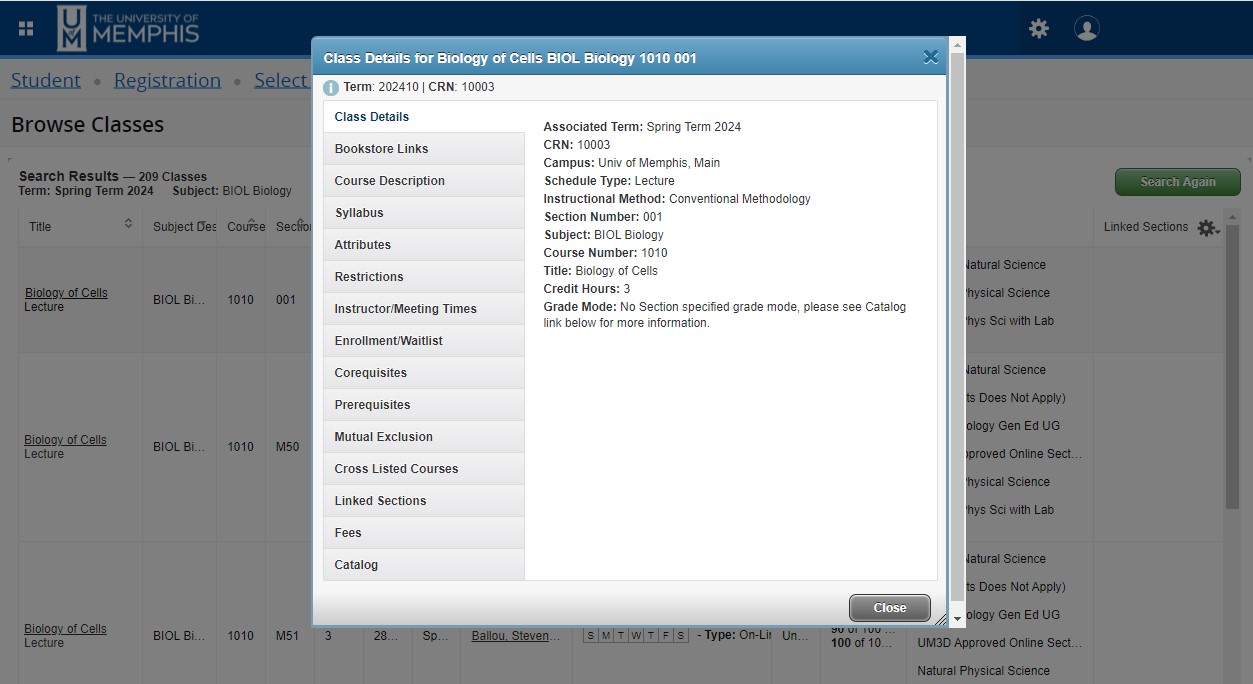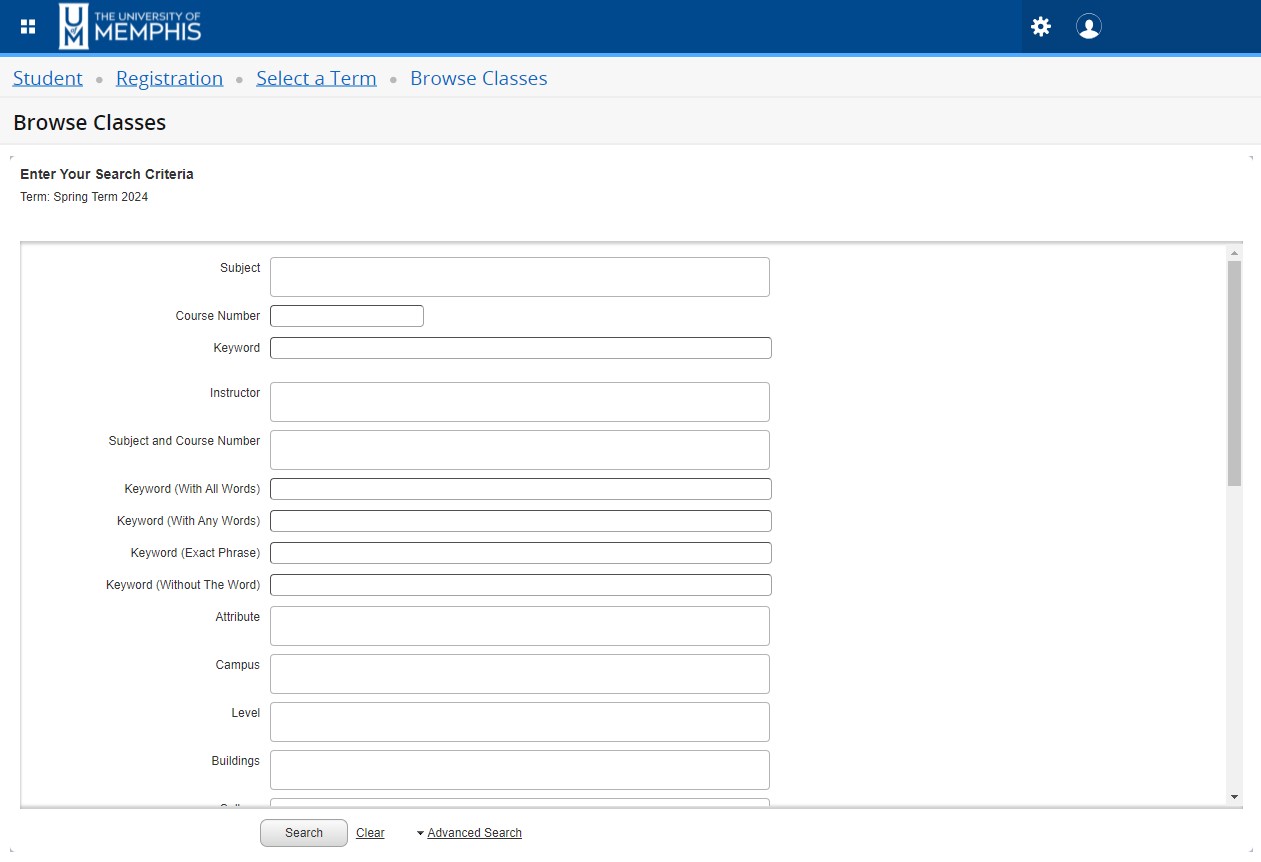Browse Classes: Search Options
This guide provides an overview of the Browse Classes function.
Helpful Hints
- When you reach the search results, you may resize and/or re-order the columns. Many of the columns are also sortable. Use the gear icon to deselect any columns you may want to remove.
- Hover over or expand the Meeting Times column to see Building and Room number information, as well as Start and End dates (which will help to determine part of term, if you did not specify).
- Clicking on the Course Title will bring up the Class Details screen. Headings in the left menu are clickable and provide additional information. Click Close to close the Class Details screen.
- When you find courses for which you will want to register, make note of the CRNs. You will use the CRNs once you are able to register.
Basic Search
- Login to the myMemphis portal. Select the Registration and Records tile, and then select the Look Up Classes link. You will see the Select a Term screen. Select the term you want from the drop-down box and click the Continue button.
- You are now on the main Browse Classes selection screen.

- Click in the Subject box to populate the list of available subjects. Begin typing in the box to narrow
down the search results. You may select more than one subject.
- You may also enter the Course Number (not the CRN). Keyword is not in use currently.
- If you entered an item that you would like to remove, click the X next to the item
to remove it. If you would like to remove all items you have entered, click Clear.
- Once you have entered your search criteria, click the Search button.
- You will see each section of the course(s) you have selected.

- Click in the Subject box to populate the list of available subjects. Begin typing in the box to narrow
down the search results. You may select more than one subject.
-
-
You may resize and/or re-order the columns. Many of the columns are also sortable. Use the gear icon to remove any unnecessary columns.
-
Clicking on the Course Title will bring up the Class Details screen. Items in the left menu are clickable. Click Close to close the Class Details screen.

-
To search again, click Search Again.
-
Advanced Search Option
You do not have to select a Subject on the main screen; click Advanced Search to begin entering search criteria.
This option allows you to search using several criteria at once. This is the search
option to use if you are trying to find courses taught during a particular meeting
pattern and/or time, or by a particular instructor, or during a specific part of term,
or a combination of these or other criteria.
When you have selected all the search options you want, click the Search button to display detailed section information.
Refer to the following for information regarding the Advanced Search selection fields:
Subject
- It is possible to select more than one Subject in one search.
- You do not have to select a Subject.
Course Number
- Leave this blank unless you are searching for a particular course. Example: You are interested in ENGL 2010, so you select "ENGL" for Subject and enter "2010" here.
- You can use this field to search for a particular number-level within a Subject or Subjects. Enter the first digit of the level followed by the per cent sign (%). Example: "3%" will return a list of 3000-level courses only.
Instructor
- Use this to search for a particular instructor.
Attribute
- Use this to search for courses that satisfy particular General Education (Gen Ed) requirements.
- Note: Some colleges require that you take particular courses to satisfy Gen Ed requirements (ex., the college may insist on a specific BIOL sequence). Check with your advisor before selecting a Gen Ed course.
Campus
- The location at which the class is being offered.
Level
- This is most useful for restricting your results to either Undergraduate or Graduate courses only, though other options are available.
College
- This is the college offering the course.
Departments
- This is the department offering the course.
Instructional Methods
- This the method in which the course is delivered.
Schedule Type
- This is the class format, e.g., Lecture, Combined Lecture/Lab, Seminar, etc.
Part of Term
- An academic term consists of several Parts of Term. You may enroll in multiple Parts
of Term. (However, the Law Term is restricted to Law students.)
- A course taken in one term is the equivalent of the same course taken in another term. Example: Full Term ENGL 1010 = First Half ENGL 1010 (or Second Half, or TN eCampus, etc.)
- This option is useful in narrowing your selection to the courses offered in a particular Part of Term. (Example: You want a list of HIST courses offered in Second Half only.)
Title
- We recommend this leaving blank, but if you do use, be sure to make use of the % operator. e.g., to search all courses with Astronomy in the title, enter "%Astronomy%". A search for Astronomy% would yield all courses with Astronomy in the first position in the title.
Course Number Range
- Unless you know specific course numbers, it is best to leave this blank.
Credit Hour Range
- Usually you should leave this field blank.
- If you do use it, it is best to fill in the first number only. This is useful in finding a 1-hour or 2-hour course you might need to bring your status up from part-time to full-time.
Meeting Days, Start Time, End Time
- Use these options to find courses that will fit around other commitments.
Open Sections Only
- Checking this box will limit results to sections that are open (i.e., have seats remaining).

